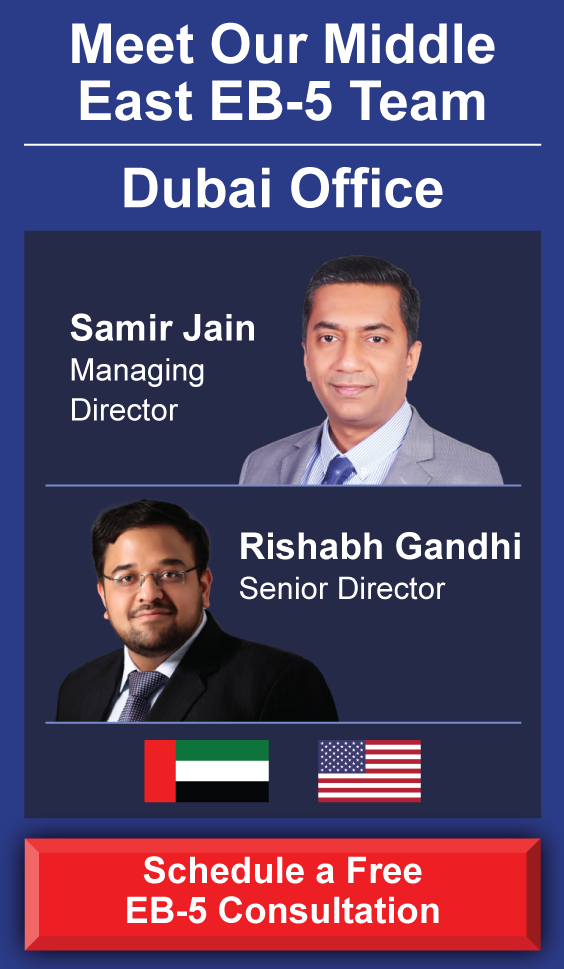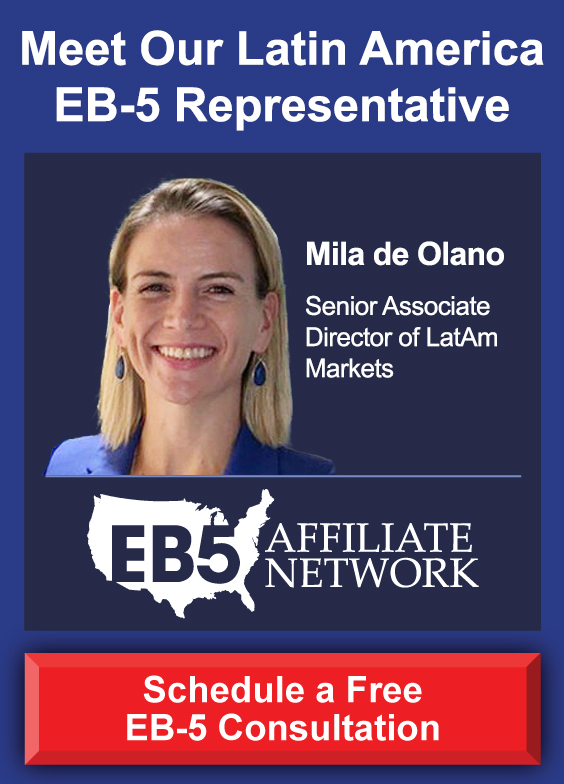
To obtain a U.S. Green Card through the EB-5 Immigrant Investor Program, individuals must invest in a project that creates jobs for American workers. There are two ways for EB-5 investors to do this. The first is to make an investment through a regional center, and the second is to make an EB5 direct investment.
While over 95% of EB-5 investors choose to make their investment through a regional center, prospective EB-5 investors should carefully consider the pros and cons of each option at the outset of the process, especially because they cannot change from one option to the other once they have made their investment.
This article explains the main differences between direct investments and regional center investments, while laying out some of the key factors that applicants must understand if they decide to make an EB5 direct investment.
How Do Direct and Regional Center Investments Differ?
- Direct Investment Job Creation
- Regional Center Job Creation
- Direct Investment Structure
- Regional Center Investment Structure
Calculating Job Creation Through the Direct Investment Model
Common Direct Investment Types
The EB-5 Investor’s Role in the Management of the Business
How Many Investors Can Invest in an EB-5 Project?
Get Expert Support With Direct EB-5 Investing
How Do Direct and Regional Center Investments Differ?
Whatever type of EB-5 investment an applicant chooses, the basic requirements remain the same:
- They must invest at least $1,050,000 in a new commercial enterprise, or $800,000 for projects in specified targeted employment areas (TEAs).
- They must create 10 full-time jobs for U.S. workers.
The most significant differences between the two models are:
- The types of jobs that count toward the job creation total.
- The role the investor plays in the EB-5 project.
- The way each investment must be structured.

Direct Investment Job Creation
The main difference between the direct and indirect investment models is how the United States Citizenship and Immigration Services (USCIS) calculates job creation.
For a direct investment, program applicants can only count the jobs created directly by the new commercial enterprise (NCE) in which they make the EB-5 investment. These jobs are typically ongoing operational roles. However, they can also include construction jobs, as long as construction will take two or more years and the construction workers are directly employed by the NCE or by a wholly owned subsidiary. These employees are often referred to as W-2 employees or employees on the payroll of the business.
Regional Center Job Creation
EB-5 investors who invest in projects sponsored by regional centers can count direct, indirect, and induced jobs. This can often make it much easier to meet the required job creation threshold. Indirect jobs result from the EB-5 project’s spending on goods (such as materials and equipment) as well as services (such as legal counsel to be provided by local companies).
Induced jobs are created by project employees spending their wages in the area. For example, this might include money spent at local restaurants or hotels, or on other services.
To calculate indirect and induced jobs, an economist performs an economic impact study. There are two specific rules that must be followed in this process. First, indirect and induced jobs can constitute 90% of an EB5 regional center project’s total job creation. Second, only 75% of the jobs can be construction positions that last for less than two years.
However, it is important to note that a real estate development project with a construction period of longer than two years would also create both direct and indirect jobs that can be counted for EB-5 program purposes.
Direct Investment Structure
Direct EB-5 investors invest directly into an NCE, and only the jobs created by that NCE are eligible to be counted toward the required job creation total.
As a result, loan models are not very suitable for EB5 direct investments, because a loan involves at least two entities.
The exception to this rule is that an investor can make an EB5 direct investment in businesses wholly owned by a parent company. In this scenario, the parent company is the NCE. However, if the investment is split between, for example, three subsidiaries owned by the NCE, all three must be involved in job creation. A concrete job creation and investment strategy must be set out in the business plan for all three companies.
Similarly, if the applicant invests in a targeted employment area (TEA)—a rural area or an area with high unemployment that would benefit from the economic growth resulting from the EB-5 investment—then all of the subsidiaries that benefit from the investment must also be in a designated TEA.
Ultimately, the business receiving the investment must either be a new enterprise or a troubled business. Direct EB-5 investors cannot simply put an existing business under new ownership.
Regional Center Investment Structure
EB-5 regional center investors must invest in an EB-5 project sponsored by a USCIS-designated regional center. EB 5 regional center investments typically involve:
- A new commercial enterprise (NCE): The business in which the EB-5 applicant invests.
- A job-creating entity (JCE): The entity that creates the jobs. This is usually a separate entity from the NCE.
Usually, the NCE loans money to the JCE to hire staff and develop the project.
Calculating Job Creation Through the Direct Investment Model

Because job creation lies at the heart of the EB-5 program, demonstrating that the EB-5 investment will create the required number of jobs is a crucial part of the business plan submitted with the investor’s I-526 petition.
For a job to count toward a direct investor’s employment total, an employee must be:
- Employed by the business in which the individual invested.
- In a permanent, continuous, full-time position that lasts for at least two years.
- In a role that meets the specific needs of the business and is paid a corresponding salary.
This does not mean that only employees who remain employed in a permanent, continuous position for the full two years can be counted. The position must exist for the full two years, even if it is not filled by the same employee during that time period.
Therefore, the focus is on qualifying positions rather than on individual employees. Payroll and tax records are used as evidence that the qualifying positions remained open—whether they were filled or not—for the full required time period. To be considered full-time, a position must require an employee to work at least 35 hours per week. Because the focus is on the position rather than on individual employees, multiple employees can share a full-time role if a formal job-share agreement is in place.
Excluded Positions
Certain types of employees are excluded from job creation totals resulting from direct investments. These include:
- Positions filled by people who are not directly employed by the business in which the EB-5 investor invested, such as contractors and employees of affiliates.
- Positions filled by the investor and by members of their immediate family.
- Part-time positions added together to create “full-time equivalent” positions.
Another important factor to consider is that the positions must be filled by American workers. USCIS defines a qualifying employee as:
“A U.S. citizen, lawful permanent resident, or other immigrant authorized to work in the United States, including a conditional resident, temporary resident, asylee, refugee, or a person residing in the United States under suspension of deportation. This definition does not include immigrant investors; their spouses, sons, or daughters; or any alien in any nonimmigrant status (such as an H-1B nonimmigrant) or who is not authorized to work in the United States.”
If the investor invests in a business located in a TEA, the positions must be filled entirely by employees working in the designated TEA.
Creating a Plausible Business Plan for Direct Investments

A direct investment business plan should demonstrate to the USCIS adjudicator that an individual’s investment will create 10 jobs within at least 2.5 years of their I-526 approval. To properly address the job creation requirement, the EB-5 investor’s business plan should include job descriptions, a hiring schedule, and a detailed overview of the staffing plan.
This must be coupled with a description of how the investment in the business—and the business itself—meets the requirements of the EB-5 program. Aspects including the description of the business and the financial projections should be clear and detailed enough to demonstrate this to USCIS.
Common Direct Investment Types
Some projects are better suited than others to an EB5 direct investment. Some of the key deciding factors are that the commercial enterprise in which the applicant invests must be feasible, truly in need of the investment, and capable of creating the required number and types of jobs.
EB-5 investors have a variety of options when it comes to direct investment, including restaurants; retail establishments; wholesale trade businesses; franchises such as salons or convenience stores; or entities in the service, manufacturing, agricultural, and technology industries.
In the case of a direct investment in a troubled business, new and preserved jobs count toward the job creation total, but those jobs must have been created or preserved as a result of the EB-5 investment.
Making a Direct Investment in an Existing Business
Making a direct investment in an existing business is possible, but it can be complicated. There are additional requirements that the investment must meet related to job creation and to the business qualifying as an NCE.
Existing Business NCE Requirements
A transfer of ownership does not turn an existing business into an NCE. Instead, the EB-5 investor must demonstrate that the business qualifies as an NCE because:
- The business will be reorganized or restructured in a way that effectively results in a new business.
- The expansion of the business through the EB-5 investment will increase its net worth or its number of employees by at least 40%.
A business can be restructured or reorganized to form an NCE only if the original business was established after November 29, 1990. Furthermore, cosmetic changes, remodeling, or rebranding are not viewed as restructuring or reorganizing; the changes must be more comprehensive. For example, turning a restaurant into a nightclub or turning a budget hotel into a high-end boutique hotel would qualify, but remodeling a restaurant and changing its name or changing a hotel from one budget franchise to another would not.
Existing Business Job Creation Requirements
When it comes to meeting the EB-5 program’s job creation requirements, direct investors in existing businesses have several options. If the investor can demonstrate that the business had already closed when they made the investment and that they bought only physical assets as opposed to, for example, branding or customer lists, then the investor can count all new jobs toward the job creation requirement. If not, jobs created by the previous owner must be deducted from the total.
Alternatively, the investor can provide documentary evidence of employment levels before they invested in the business, and then provide a clear, plausible plan for how they intend to create 10 new, qualifying positions while preserving all existing positions.
Lastly, the investor can show that the business meets the USCIS definition of a troubled business to include pre-existing jobs in the job creation total:
“A troubled business is one that has been in existence for at least two years and has incurred a net loss during the 12- or 24-month period before the priority date on the immigrant investor’s Form I-526. The loss for this period must be at least 20% of the troubled business’ net worth before the loss. When determining whether the troubled business has been in existence for two years, USCIS will consider successors in interest to the troubled business when evaluating whether they have been in existence for the same period of time as the business they succeeded.”
The EB-5 Investor’s Role in the Management of the Business

To fulfill the requirements of the EB-5 program, an investor must be involved in the management of the NCE, but the required level of involvement varies. This can range from involvement in the daily operations of the business to merely playing a role in broader policy formation. Although some investors prefer a more hands-on management approach, investors who lack management experience or who would simply prefer to be less involved can assume the same responsibilities typically assigned to a limited partner.
The differences in the ways direct EB-5 investments and regional center investments are structured can influence an investor’s role in the management of their NCE.
- Regional center EB-5 investments: The investor can become a member of an entity designed to manage the loan that constitutes the EB-5 investment. As a result, a regional center investor can take a more indirect approach.
- Direct EB-5 investments: Investors must be directly involved in the management of the NCE, but they can limit their involvement to policy decisions.
How Many Investors Can Invest in an EB-5 Project?
Direct EB-5 investment projects can have only one EB-5 investor, whereas regional center projects can have two or more. From USCIS’s perspective, what matters is that the NCE is able to generate the required number of jobs for the direct EB-5 investor. Other non-EB-5 investors involved in the project do not need to be taken into account in the calculation of the EB-5 investor’s job creation totals.
Still, while no formal policy dictates that non-EB-5 investors must document their source of funds (SOF), USCIS can (and often does) request information about, and documentation from, these other investors. USCIS has been issuing requests for evidence (RFEs) relating to the lawful sources of funds for other investors.

Get Expert Support With Direct EB-5 Investing
Choosing between regional center investments and direct EB-5 investments is one of the most important steps in the EB-5 process, and investors cannot change from one to the other once they have made their investments. Because of the implications of each model, it is best to consult an EB-5 immigration attorney for guidance before choosing the EB-5 project in which to invest.
If you need help choosing the right investment type for you, book a call with our EB-5 team and our experts will assist you in navigating every step of the EB-5 process.







